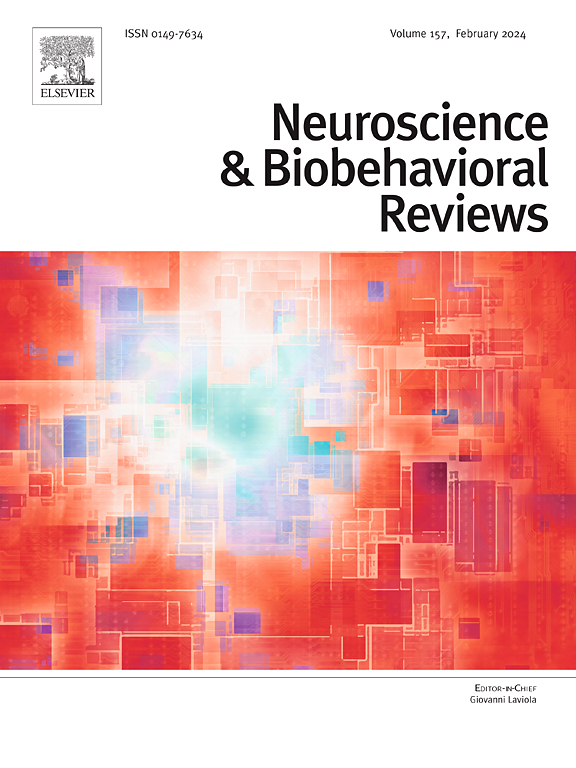局灶性癫痫的早期发病是否与非典型语言偏侧有关?系统回顾,荟萃分析和新数据。
IF 7.5
1区 医学
Q1 BEHAVIORAL SCIENCES
引用次数: 0
摘要
右侧和双侧语言表征在局灶性癫痫中很常见,可能反映了癫痫性病变和/或左半球癫痫活动的影响。非典型语言偏侧被认为更可能发生在早期癫痫发作的病例中,因为儿童时期的语言可塑性更强。然而,这种关联的证据是混杂的,大多数研究基于小样本和异质性队列。在这项预先登记的荟萃分析中,我们研究了局灶性癫痫患者癫痫发作年龄与fmri衍生的语言偏侧之间的关系。综合效应大小表明,在总样本中,较早发病与右侧语言偏侧化之间存在相关性(r=0.1, p=。005, k=58, n=1240),左右半球癫痫样本中癫痫发作年龄与语言偏侧的相关性无差异(Q=62.03, p= 0.302)。在对个体参与者数据(n=1157)的探索性分析中,我们证明了强有力的证据,即对数模型比线性模型(BF=350)或以6岁为截止(BF=36)的分类模型更适合数据。这些发现表明癫痫发作的年龄和语言侧化之间存在着微小但重要的关系。这一关系与语言可塑性理论一致,该理论提出幼儿时期的可塑性呈指数下降。然而,考虑到这种影响是微妙的,并且只在较大的样本量中发现,在个体患者水平上,癫痫发作的早期年龄不能作为非典型语言侧化的良好指标。本文章由计算机程序翻译,如有差异,请以英文原文为准。
Is an earlier onset of focal epilepsy associated with atypical language lateralization? A systematic review, meta-analysis and new data
Right and bilateral language representation is common in focal epilepsy, possibly reflecting the influence of epileptogenic lesions and/or seizure activity in the left hemisphere. Atypical language lateralization is assumed to be more likely in cases of early seizure onset, due to greater language plasticity in childhood. However, evidence for this association is mixed, with most research based on small samples and heterogenous cohorts. In this preregistered meta-analysis we examined the association between age at seizure onset and fMRI-derived language lateralization in individuals with focal epilepsy. The pooled effect size demonstrated a correlation between an earlier onset and rightward language lateralization in the total sample (r = 0.1, p = .005, k = 58, n = 1240), with no difference in the correlation between age at seizure onset and language lateralization between left and right hemisphere epilepsy samples (Q=62.03, p = .302). In exploratory analyses of the individual participant data (n = 1157), we demonstrated strong evidence that a logarithmic model fits the data better than a linear (BF=350) or categorical model with 6 years of age as a cut-off (BF=36). These findings indicate that there is a small but significant relationship between age at seizure onset and language lateralization. The relationship was consistent with theories of language plasticity proposing an exponential decline in plasticity over early childhood. However, given that this effect was subtle and only found in larger sample sizes, an early age at seizure onset would not serve as a good indicator of atypical language lateralization on the individual patient level.
求助全文
通过发布文献求助,成功后即可免费获取论文全文。
去求助
来源期刊
CiteScore
14.20
自引率
3.70%
发文量
466
审稿时长
6 months
期刊介绍:
The official journal of the International Behavioral Neuroscience Society publishes original and significant review articles that explore the intersection between neuroscience and the study of psychological processes and behavior. The journal also welcomes articles that primarily focus on psychological processes and behavior, as long as they have relevance to one or more areas of neuroscience.

 求助内容:
求助内容: 应助结果提醒方式:
应助结果提醒方式:


